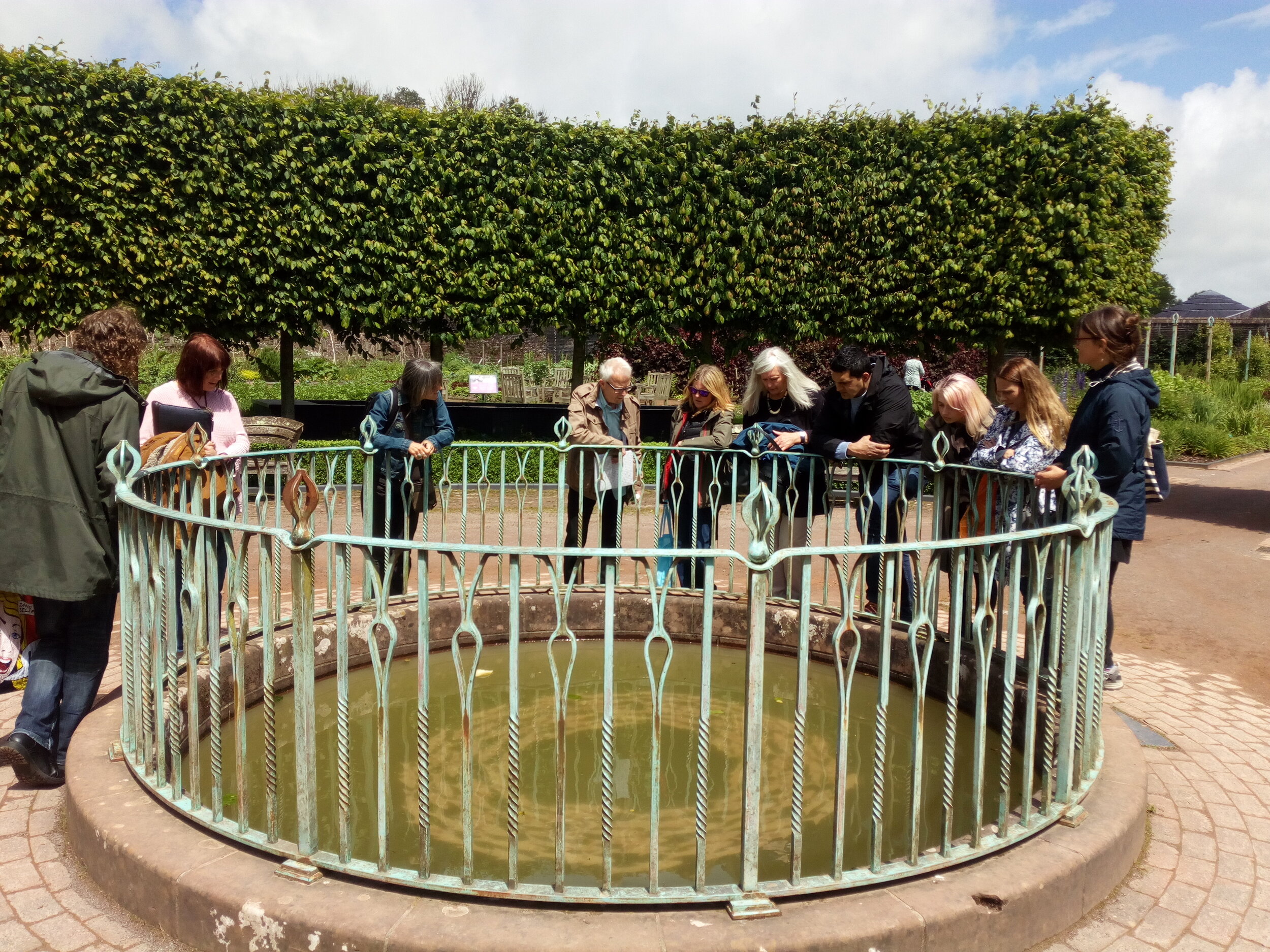



Art-Science Research Projects
My involvement with art-science collaboration developed from an Arts Council Wales (ACW) grant in 2007 that funded me to make sculptural work in relation to notions of landscape and the tradition of sculpture within gardens. As part of the project I was invited to exhibit sculptures in specific locations at the National Botanic Garden of Wales (NBGW). This led to a Sculpture Cymru art-science collaboration, Barcode Sculpture in 2015. I led the project and was awarded funding from ACW to enable nine artists to make site- specific artwork that individually responded to the global scientific research project Barcode Wales which records the DNA of all our native plants in the form of barcodes.
Professor Andrea Liggins was undertaking similar research and in 2015, Professor Liggins, Dr Natasha De Vere (NBGW) and I met to discuss putting together a research bid for an Arts and Humanities Research Council (AHRC) networking grant to explore how artists and scientists could work together to communicate the importance of pollinator species to our enivronment. This culminated into the Cross-Pollination: Revaluing Pollinators through Arts and Science Collaboration project which ran from 2016-17.
Prof Liggins was the Principal Investigator and I was lead artist on the project. We held exhibitions at NGBW and Dr Beynon’s Bug Farm, St Davids, Pembrokeshire.
I collaborated with Bristol University, and after visiting the Bristol Bee Lab I made work that looked at the multimodal ‘cues’ that pollinators use to find flowers and collect nectar.
In 2017 I travelled to Cornell University, USA, to take up a residency at the Mc Art lab for pollinator health. Whilst there I established contacts and made a proposal to exhibit new artwork from the project. The visit enabled me to make new interdisciplinary work that I presented at the Cross-Pollination conference in Swansea and West Wales. In April 2019 I co-curated the project’s exhibition in Cornell University with Professor Catrin Webster from Swansea College Of Art: PolliNation, Artists and Scientists crossing borders to explore pollinator health.
The exhibition comprised work from eight artists and was held at the Mann Gallery Cornell University, and seen by over 50, 000 people. The exhibition provided a six month focus for the Mc Art lab for pollinator health at Cornell.
“PolliNation” conveys scientific facts while stimulating thought-provoking questions and reactions through art. Statistics about the decline of pollinators – including the 28-46% average annual loss rate for honey bee hives in the U.S. – are displayed alongside artworks that highlight pollinators’ delicate beauty, like the larger than life-sized bee and butterfly eggs made from wax and glass by Sarah Tombs, a sculptor and lecturer from Wales who gathered insight and inspiration from Cornell University’s entomologists and insect collections
“In 2017, I came to Scott McArt in the McArt Lab, and I went with his team into the fields, watching them collecting insects and plant materials and going back to the lab to do complex data processing and modeling,” Tombs said. She described the exhibit’s combination of art and science as a “cross-fertilization of different ways of communicating,” which brings the issue of pollinator health to a bigger audience.
Cornell Newsletter May 2019
Sculpture Festival at the National Botanic Garden of Wales
Sculpture Festival at the National Botanic Garden of Wales
Tread Gently Series of ‘Herbaria’ stepping stones
Bumblebee Eggs From the Collection Series Glass 2016
Bumblebee Eggs From the Collection Series Glass 2016
Pollen From the Collection Series Bronze 2016
Sculpture Festival at the National Botanic Garden of Wales
Sculpture Festival at the National Botanic Garden of Wales
From the Collection Cornell Mann Gallery
Butterfly Eggs From the Collection Series Glass 2016
Flower of Plenty From the Collection Series Beeswax 2016
Sculpture Festival at the National Botanic Garden of Wales
Ethereal Petals 2015 Dimensions variable Wax
















